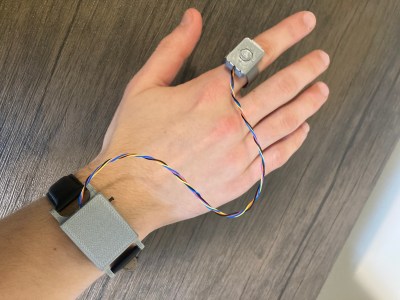Sometimes you instantly know who’s behind a project from the subject matter alone. So when we saw this “aerial dog poop removal system” show up in the tips line, we knew it had to be the work of [Caleb Olson].
If you’re unfamiliar with [Caleb]’s oeuvre, let us refresh your memory. [Caleb] has been on a bit of a dog poop journey, starting with a machine-learning system that analyzed security camera footage to detect when the adorable [Twinkie] dropped a deuce in the yard. Not content with just knowing when a poop event has occurred, he automated the task of locating the packages with a poop-pointing robot laser. Removal of the poop remained a manual task, one which [Caleb] was keen to outsource, hence the current work.
The video below, from a lightning talk at a conference, is pretty much all we have to go on, and the quality is a bit potato-esque. And while [Caleb]’s PoopCopter is clearly still a prototype, it’s easy to get the gist. Combining data from the previous poop-adjacent efforts, [Caleb] has built a quadcopter that can (or will, someday) be guided to the approximate location of the offending package, home in on it using a downward-looking camera, and autonomously whisk it away.
The retrieval mechanism is the high point for us; rather than a complicated, servo-laden “sky scoop” or something similar, the drone has a bell-shaped container on its belly with a series of geared leaves on the open end. The leaves are open when the drone descends onto the payload, and then close as the drone does a quick rotation around the yaw axis. And, as [Caleb] gleefully notes, the leaves can also open in midair with a high-torque yaw move in the opposite direction; the potential for neighborly hijinx is staggering.
All jokes and puns aside, this looks fantastic, and we can’t wait for more information and a better video. And lest you think [Caleb] only works on “Number Two” problems, never fear — he’s also put considerable work into automating his offspring and taking the awkwardness out of social interactions.
Continue reading “Dog Poop Drone Cleans Up The Yard So You Don’t Have To”


















